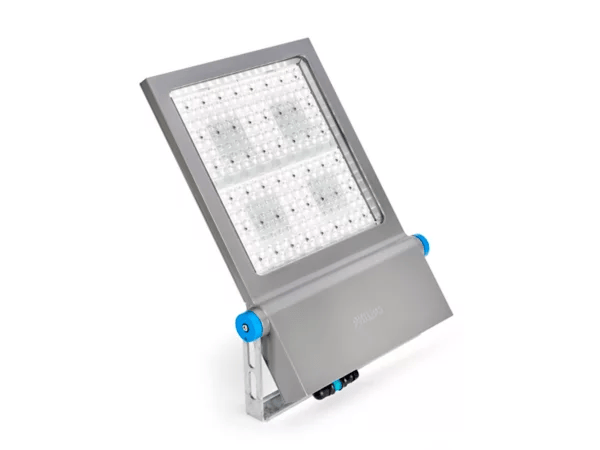Stadium lighting delivers powerful, uniform illumination for sports and events, ensuring clear visibility for players and spectators. It enhances performance, safety, and broadcasting quality, even under challenging conditions.
Specifications
Primary Function
High-Intensity Illumination: Stadium lighting is designed to provide powerful, uniform lighting for large areas, ensuring clear visibility for players, spectators, and broadcasters.
Energy Efficiency: Advanced stadium lighting systems maximize brightness while minimizing energy consumption, supporting sustainable and cost-effective operation.
Design and Build
Fixture Design: Stadium lights are available in floodlight, spotlight, and high-mast designs, each optimized for specific coverage and performance needs.
Material Options: Common materials include weather-resistant aluminum, stainless steel, and reinforced glass, ensuring durability in outdoor conditions.
Size Variations: Stadium lighting fixtures vary in size and output, from compact units for smaller venues to large-scale systems for expansive arenas.
Light Source Types: These systems typically use LED, metal halide, or high-pressure sodium lamps for high-lumen output and efficiency.
Finish and Style: Robust finishes like powder-coated metals or corrosion-resistant coatings ensure longevity and aesthetic appeal in outdoor environments.
Performance and Light Output
Lumen Output: Stadium lights deliver extremely high lumen output, ensuring bright and consistent illumination across large playing fields.
Beam Angle Control: Adjustable beam angles allow precise targeting, reducing glare and light spillage while focusing illumination on the field.
CRI (Color Rendering Index): High CRI ratings provide accurate color representation, crucial for broadcasting and player visibility.
Energy Efficiency
Low Power Consumption: LED stadium lights consume significantly less energy than traditional metal halide lamps while providing equivalent or better brightness.
Energy Star Certification: Certified stadium lighting systems ensure high efficiency and reduced operational costs.
Adaptive Lighting Systems: Some setups include programmable lighting controls to adjust brightness and energy use based on event requirements.
Control and Features
Centralized Control Systems: Modern stadium lighting often features centralized control panels or software systems for managing light intensity, patterns, and schedules.
Remote Control: Advanced systems allow for remote adjustments via mobile apps or specialized devices.
Smart Integration: Smart stadium lights can integrate with IoT systems, enabling automated scheduling, real-time monitoring, and dynamic adjustments.
Lighting Effects and Customization
Dynamic Effects: Stadium lights often support programmable effects such as light shows, strobing, or synchronized color changes for entertainment purposes.
Color Temperature Options: Adjustable color temperatures ensure optimal visibility and ambiance, from warm white for ceremonies to cool daylight for matches.
RGB Capabilities: Some systems feature RGB lighting for vibrant and engaging displays during events or halftime shows.
Noise Level
Silent Operation: High-quality stadium lights are designed for silent operation, ensuring no distractions for players, spectators, or broadcasters.
Efficient Cooling Systems: Advanced heat management ensures minimal noise from cooling mechanisms, even during prolonged use.
Applications and Use Cases
Sports Venues: Perfect for illuminating football fields, cricket grounds, tennis courts, and other large-scale sporting arenas.
Entertainment Events: Ideal for concerts, festivals, and other performances requiring high-quality lighting and dynamic effects.
Public Spaces: Commonly used in parks, open plazas, and large outdoor events to ensure safety and visibility.
Broadcasting: Engineered to meet broadcast standards, ensuring proper lighting for live telecasts without shadows or flickering.
Key Considerations
Coverage Area: Choose lighting fixtures with appropriate lumen output and beam angles to ensure even illumination across the entire stadium.
Height of Installation: Stadium lights are mounted on high poles or structures, requiring fixtures that can deliver focused light from significant heights.
Weather Resistance: Fixtures should be designed to withstand extreme weather conditions, including rain, wind, and UV exposure.
Installation: Professional installation is crucial for large-scale stadium lighting systems to ensure proper alignment, wiring, and safety standards.
Maintenance: Regular cleaning, inspection, and replacement of fixtures or components are necessary to maintain optimal performance.
